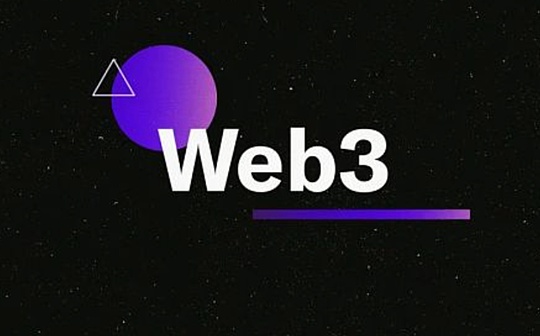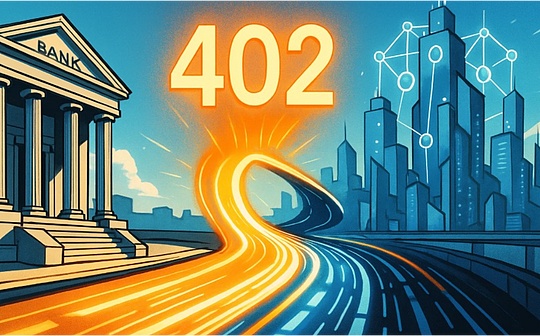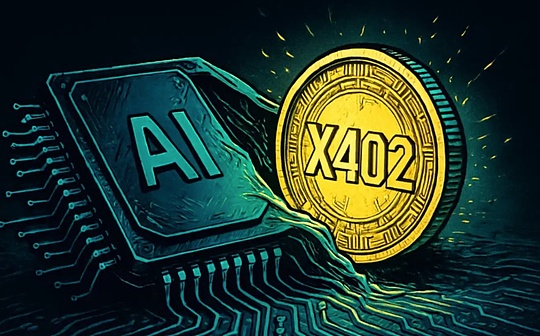
Author: Meng Yan, Solv Lianchuang Source: X, @myanTokenGeek
The current situation is very obvious.If it develops normally, the crypto market will usher in a bull market in 2024, and capital and market sentiment will drive the price of crypto assets to rise sharply.Although there have been three bull markets in the past decade, the external environment this time is obviously different.Simply put, in the previous few bull markets, crypto made money, and other industries also made money. People envy you, but they don’t hate you.This time it is different. Now the global political and economic situation is gradually becoming more complicated, tense and confrontational, and many people have a hard time.Against this backdrop, if an industry that is generally regarded by the outside world as mainly based on speculative gambling will be extremely prosperous, it will be particularly dazzling.
And there are not many people who are willing to speak for crypto now.Since the violent collapse of the crypto market in 2022, the outside world’s curiosity and patience about the crypto industry have basically been exhausted.Today, besides the stakeholders within this industry, it is difficult to find outsiders who are not biased and have a positive view of crypto.If a bull market occurs in the crypto market, this prejudice and strong negative perception can easily turn into jealousy and hatred under the stimulus, and then become a fierce intervention or even a blow to the crypto industry.In severe cases, the market may collapse instantly due to external intervention, and some people will also be in trouble.People in the Crypto industry should be mentally prepared for this.
what to do?
It has become particularly important and urgent to create some valuable, publicly influential and persuasive innovations in the Web3 field as soon as possible.
The relationship between crypto and Web3 needs to be clarified.I’llcrypto is defined as transactions of crypto digital assets,BundleWeb3 is defined as a technological innovation campaign aimed at building a credible digital economy.Ideally, crypto and Web3 are related to each other and are inside and outside each other. Web3 is the real economy of crypto, and crypto is the virtual economy of Web3.But the reality is that over the years, in this combination, the weak and the strong and the strong, the yin is strong and the yang is weak, and speculation has been constantly changing. Web3 application has been a long-term stagnant pool.
There are three reasons for this problem.First, many people don’t believe that Web3 has a promising future.Second, the technical infrastructure required for Web3 success is very weak, and third, Web3 has not yet established a guiding ideology and methodology.By solving these three problems, the innovative application of Web3 will develop very vigorously.
So can these three problems be solved in 2024?I think there is a good chance.
Let’s look at the first question first, that is, the question of “Is Web3 promising?”The narrative of Web3 is not difficult to understand. It is mainly based on a series of innovations in cryptography to build an autonomous and credible contractual environment in the digital economy.The technical foundation of Web3 is solid, with unquestionable feasibility, clear logic, and clear value. In itself, the future problem should not be a problem.However, due to premature financialization, there has been a lot of interference with the Web3 narrative.Vitalik complained about the so-called Degen gamblers in his recent articles, and that’s why.
There is a secret in the circle that is well-known but few people publicly reveal, that is, among the “most successful” people in the “industry”, a considerable number of people do not understand Web3 at all, nor do they believe in Web3.They never believed in the bone that blockchain and decentralized technologies have any other uses besides speculative transactions.Therefore, as successful people in the “industry”, they often semi-publicly promote blockchain in various occasions in order to show their “transparency” and “candidacy”, and ridicule Web3 as a castle in the air, which is impossible to achieve..This situation has appeared in Asia’s crypto circles on a large scale, seriously interfering with people’s understanding of Web3.
This absurd situation occurs because the outside world generally confuses crypto and the Web3 industry.In fact, among the successful people in the crypto trading market, there are many people who don’t know much about technology, especially their understanding of cryptography is very shallow. They only trade crypto assets as another speculative target, and through speculative trading or market manipulation.They have made good returns in the market for the time being. They do not understand, care and do not bother to learn the underlying logic of Web3, and cannot see the possible impact of cryptography technology on the real economy and life.If Web3 is confused with crypto and simply takes money as the standard, these temporary trading winners may be regarded as successful people in the Web3 industry, thinking that they have high cognition and take their words as truth.
But this is a serious misunderstanding, because Web3 is not the same as crypto.A successful trader in the crypto market may be a crypto speculator expert, a master who accurately grasps the speculative psychology of the chaotic, a market manipulator, an insider, an arbitrage, or a simple lucky one, but all of this may have nothing to do with his level of perception of Web3.Such a successful person may not even know the basic Web3 technology concept, and may completely believe from the bottom of his heart that cryptography is a heavenly book, blockchain is useless, and Web3 is purely a gimmick.In the real world, if a Wall Street trader pointed out the direction for innovation in AI models, or asserted that there was a structural error in the molecular formula of some anti-cancer drug, most people would think that this guy had paranoia and that no one would be because of it.He made money on AI and biomedical stocks and thought he had a better say than OpenAI or Johns Hopkins professors.However, in the Web3 industry, a crypto trading expert (or more likely is just a market manipulator or insider trading expert, commonly known as sickle) can make a big fuss about ZK, L2 or advanced tokenization technology, but it can attract everyone’s applause.The absurdity of this situation should be fully understood.
We must return the voice of Web3 to those who are really doing Web3 innovation and doing Web3, explain the narrative of Web3 clearly, and show the future, logic and feasibility of Web3 well, and regarding “whether Web3 has a future”The problem will be solved.
The second problem, that is, the weak technical infrastructure of Web3, has been a very serious problem over the past decade.In fact, people’s expectations for Web3 are far ahead of the development of infrastructure, so that many applications cannot be bad, but they cannot do it, or the effect is very poor after it is made.This is also one of the important reasons why some crooked monks asserted that Web3 has no chance: because they don’t understand technology, they can only make judgments based on superficial phenomena.
But the Web3 infrastructure has made great progress over the past few years.The infrastructure mentioned here does not only refer to blockchain, but also includes various protocol layers and auxiliary components such as ZK, accounts, DeFi, wallets, development tools, developer education.It is particularly important to note that stablecoins are also an infrastructure, and may be one of the most core infrastructures.The development of stablecoins, compliant stablecoins and CBDCs is actually an important condition for today’s Web3 to talk about application innovation.
How has the infrastructure of Web3 developed to the point?In short, it is the first appearance.In terms of performance, it has reached the level of making a difference. In terms of cost, it has also met the conditions for large-scale promotion with some subsidies and incentives for some token economy.Therefore, from a macro perspective, whether it is performance or cost, it is enough to support some basic chains for large-scale, high-concurrency application scenarios.
The main problem at present is that there are many sects and fragmentation problems are beginning to emerge. Each has its own strengths and each has its own complaints. There is no option that is relatively balanced in all aspects.Ethereum has good security, large asset scale, and many developers, but its performance is too poor.Various EVM main chains and L2 have excellent performance, but limited asset size.Solana has good performance and complete tools, but there are too few developers.In short, full competition has begun, but no players have fully met the standards of economic and technical characteristics.But overall, the development of Web3 technology infrastructure has been initially in place, providing innovators with a wealth of combination options.Web3 innovators in 2024 should no longer use weak technical infrastructure as an excuse.
The third question, that is, the guiding ideology and methodology, is the most urgent problem at present.It is no exaggeration to say that in terms of thought, the entire Web3 industry is still groping in the dark, and I don’t know where to go to be able to break the deadlock first.
Before Google established its advertising business model in 2004, the Internet industry was in this state.Many people have understood the key points and abilities of Internet technology, and have guessed some directions from theory and made some applications, but they have not yet worked. In addition to simple emails and Internet media for content delivery or distribution, as well as pornography, gambling and drugs.In addition, I don’t know what I can do with the Internet, and I don’t know how to make money.
The same is true for today’s Web3. There are many theoretical ideas, but apart from the transfer and remittance of digital assets and speculation, none of them can do it. I don’t know what profit model there is in addition to the sale of assets in various ways.The entire industry is indeed looking forward to a major methodological breakthrough.
I am optimistic about this.In the past few years, especially in the past 2023, the Web3 industry has made some important progress at the forefront of ideas.
The first is to understand and describe the core value proposition of Web3, which is more accurate than before.More and more people are startingTaking “autonomousness” and “trustworthiness” as the fundamental value proposition of Web3, adjusting the previous attitude of “decentralization” as the standard.In fact, “decentralization” is only one of the means to achieve autonomy and trustworthiness, and in many cases it is not the most reasonable means.I believe that in 2024, through in-depth theoretical discussions and some successful case practices, the most cutting-edge innovators in the Web3 industry will be able to get rid of the fundamentalist myth of “decentralization only” and focus more on autonomy identity and autonomyAccounts, autonomy assets, autonomy data and cross-verification, trusted computing, and other more essential elements, which will lead to major changes in the Web3 technology stack, from relying solely on blockchain to fully apply ZK, VC, DID, etc.Cryptography technical achievements.
The second is to start facing reality and respond to users’ needs for privacy protection and respecting authority proposed by them in actual applications.Previously, the entire Web3 could not escape the shackles of the ideological origin of blockchain “crypto-punk”, one-sidedly emphasized extreme transparency, and one-sidedly advocated a simple consensus mechanism of “one person, one vote, and a minority obeys the majority”. It is neither reasonable norIncompatible with the real world.With the development of ZK technology and the application of VC and DID technology, the new Web3 applications can effectively and accurately protect privacy, avoid “information big pot rice”, and can support the authority of real-world authorized institutions in fact determination, so that they can make advancedWeb3 technology is practically used to connect real-world needs.
The third is the expansion of token applications.A few years ago, the blockchain industry generally regarded tokens as “tokens” and represented value rights within the ecosystem.However, with the gradual accumulation of experience in various fields of Web3, people gradually began to realize that the only thing blockchain is to manage tokens. Therefore, the expansion of blockchain application scope is largely manifested as tokens.expansion of scope.The token itself is definitely not just a “token”. The token can be a token value carrier, a proof of stake, a new expression form of digital items themselves, or a component of a smart contract.It can be said that blockchain can be applied wherever to expand. Almost all problems that are worthy of being solved on blockchain should be considered to solve, and things that are not suitable for tokenization.There is a high probability that it does not need to be placed on the blockchain.When the entire Web3 industry gradually converges on-chain innovation to tokens, it is possible to form a complete method system faster.
Fourth, the attitude towards supervision has undergone fundamental changes.Today is not the same. Today, regulatory and law enforcement agencies in more regions have stronger confidence in determining which behaviors are innovative and which behaviors are fraud or illegal, have fewer concerns, make more arbitrary decisions, and act more rapidly.Web3 integrates regulatory technology (RegTech), connects and even actively supports reasonable regulatory mechanisms, which is both forced by the situation and the general trend.I have observed that more and more Web3 applications actively support supervision, which is very necessary and timely.
This does not mean that all methodological problems of Web3 have been solved. In fact, there are still many problems that are still unresolved, such as how to balance freedom and compliance, privacy and transparency, how to make a profit, and how to reflect the transfer in the competition with Web2The opponent has an unattainable advantage.But, I think that long-term dogma is dissolving at least among some of the Web3 innovators, new ideas are beginning to emerge in the right direction.
Based on the above judgments, I believe that in the next one or two years, the Web3 industry will have innovations with accurate value creation logic and potential for large-scale real economy applications.Those real Web3 innovation projects will begin to receive sustainable long-term investments on a scale, thus allowing long-term, continuous and accumulative construction in the Web3 industry to begin to show higher returns than short-term speculation.








